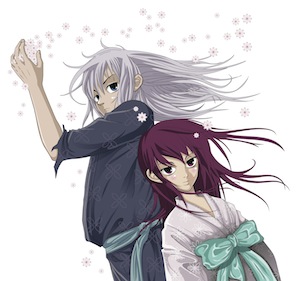A diverse array of East Asian popular media has been flooding the global marketplace in recent decades, and UO faculty are examining this form of "literature" from multiple perspectives.
Korean pop culture or “K-pop” is fresh, colorful, ambitious and currently the most widely consumed of East Asian media—a phenomenon known as the “Korean Wave.” From Thailand to Japan to China, K-pop is what’s cool on TV, in music and in movies.
K-pop is also ripe for analysis as literature—a term that now encompasses traditional print as well as new-media expressions of culture.
At the UO, Dong Hoon Kim is the resident K-pop expert. A new assistant professor in the Department of East Asian Languages and Literatures, he studies the popularization of Korean culture throughout Asia and beyond and considers how Korean media phenomena, such as soap operas and cinema, have contributed to Korea’s own concept of its modern identity.
One of two Korean scholars who joined EALL this academic year (thanks to a U.S. Department of Education Title VI grant), Dong Hoon Kim is also developing curriculum for a proposed major in Korean studies.
 Beyond Korea and K-pop, a diverse array of East Asian popular media has been flooding the global marketplace in recent decades. Expression takes many forms: in addition to books, television and movies, the Asian mass-culture phenomenon includes manga, anime, cell-phone novels (with chapters of less than 100 words), video games (from Mario Brothers to Mortal Kombat to the Wii suite) and even toys that have gone digital. Hello Kitty, for instance, is now enjoying a resurgence as an iPhone app.
Beyond Korea and K-pop, a diverse array of East Asian popular media has been flooding the global marketplace in recent decades. Expression takes many forms: in addition to books, television and movies, the Asian mass-culture phenomenon includes manga, anime, cell-phone novels (with chapters of less than 100 words), video games (from Mario Brothers to Mortal Kombat to the Wii suite) and even toys that have gone digital. Hello Kitty, for instance, is now enjoying a resurgence as an iPhone app.
For EALL faculty members, the Asian popular culture wave offers plenty to ponder: transnational economics, cultural identity, regionalism, gender roles and communication. Here are some of their scholarly interests:
Alisa Freedman, Japanese Literature and Film: Freedman draws on traditional forms of literature as well as visual media to explore trends in Japanese politics, society and economics. Much of her work focuses on the role of women in the Japanese workforce and the ways media shapes career identities, workplace fashion and the jobs of working women. Three of the courses she teaches—J-Pop: Japanese Popular Culture in the World, Youth in Japanese Culture and Digital Age Stories—invite students to examine the impact of Japan’s modernization on the country’s cultural landscape.
Steven Brown, Japanese Film and Popular Culture: The pop culture paraphernalia cluttering Brown’s office—comic magazines (manga) and posters of Japanese contemporary films—reflect his research interest in Japanese animation. His classes, Tokyo Cyberpunk and Japanese Horror, dig deep into philosophical questions via anime. Like science fiction, anime allows an intellectual exploration of ethically fraught scenarios such as a postapocalyptic world. In particular, the genre of Tokyo cyberpunk explores the concept of the city as an abstract organism and blurs the boundaries between people and machines.
Alison Groppe, Chinese Literature and Film: Groppe studies Malaysian Chinese literature and its relationship to Chinese literatures produced in mainland China, Taiwan and Hong Kong. Most recently, she has been exploring the circulation of popular culture between Shanghai, Hong Kong, Taipei, Kuala Lumpur and Singapore, and how this has allowed ethnic Chinese populations in cities across the globe to connect with each other. A special interest: nostalgia for Chinese popular music, film and literature of the 1930s through the 1970s, as evidenced in contemporary stories and films in Malaysia and Taiwan.
“We’re really teaching culture,” says Maram Epstein, associate professor of Chinese and the EALL department head. “Literature, film and popular media are just different expressions of it.”
—Patricia Hickson







 study by UO economists, released just before the Rose Bowl, has been picked up by the media far and wide.
study by UO economists, released just before the Rose Bowl, has been picked up by the media far and wide.